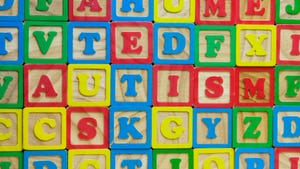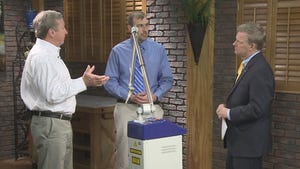UAMS researchers use scent-trained dogs to detect thyroid cancer
Source: http://www.thv11.com/story/news/health/2015/03/09/uams-scent-trained-dogs-thyroid-cancer/24646775
LITTLE ROCK, Ark. – Researchers from the University of Arkansas for Medical Sciences (UAMS) presented findings at the Endocrine Society's ENDO 2015 conference March 6 in San Diego showing nearly 90 percent accuracy using scent-trained dogs to detect thyroid cancer.
LITTLE ROCK, Ark. – Researchers from the University of Arkansas for Medical Sciences (UAMS) presented findings at the Endocrine Society's ENDO 2015 conference March 6 in San Diego showing nearly 90 percent accuracy using scent-trained dogs to detect thyroid cancer.
"Detecting and diagnosing thyroid cancer can be difficult, because it's often looking for a very small number of occurrences in a very large background of benign nodules. It is also difficult to say with certainty that a patient is cancer-free after surgery," said Donald Bodenner, M.D., Ph.D., a professor of geriatrics at UAMS and director of the Thyroid Center and chief of endocrine oncology.
"Having a technique with which to do these things with a higher degree of certainty would be a tremendous advance in thyroid cancer," he said.
The study, led by Arny Ferrando, Ph.D., a professor and researcher in the UAMS Donald W. Reynolds Institute on Aging, and Andrew Hinson, M.D., a postdoctoral fellow at UAMS, took dogs already trained for scent detection and imprinted them with fresh tissue taken from patients diagnosed with papillary thyroid carcinoma, the most common type of thyroid cancer. Fellow researcher Brendan Stack Jr., M.D., a head and neck surgeon in the UAMS College of Medicine Department of Otolaryngology-Head and Neck Surgery, assisted with the study.
The dogs were then presented with urine samples from patients — some with thyroid cancer and some with benign nodules — and asked to indicate whether each sample had thyroid cancer or not. Their results were compared to a surgical pathology diagnosis and matched in 30 of 34 cases, or 88.2 percent accuracy.
"What we have done, no one has attempted to do," said Ferrando, who noted past studies showing trained dogs can reliably tell the difference between various cancerous and non-cancerous tissues. "We have taken the next step by asking the dog to tell us whether or not cancer exists before the medical diagnostic system does. We wanted to see, can the doctor utilize the dog to help diagnose cancer?"
The results so far lead the researchers to believe the answer is "yes."
"We've all looked at it from a skeptical, scientific standpoint, but the data just keeps leading us to the fact that this has remarkable clinical potential," said Ferrando.
The implications could be tremendous, the researchers said, both in terms of cost savings in diagnoses and especially the prevention of unnecessary surgeries. Additionally, the method could be transported to under-served areas where traditional detection methods of biopsy and ultrasound are unavailable. Finally, the researchers believe the training could potentially be used in diagnosis of other cancers such as ovarian, breast, kidney, bladder and prostate.
"Thyroid cancer is our template," said Ferrando. "It's one of the fastest growing cancers in terms of occurrences in the world. It's not one of the highest mortality cancers, but one of the fastest growing in terms of newly diagnosed cases."
So far the team has used what are termed "general source" dogs, or strays that have been trained in scent detection methods. Their plan is to now work with researchers at Auburn University's Canine Performance Sciences program in the College of Veterinary Medicine to teach and imprint "specific purpose" dogs, or those specifically bred for detection. Comparable results achieved at Auburn will further validate their approach and the likelihood of use as an additional diagnostic tool in the clinic.
"If we do 300 samples with a diagnostic accuracy of 90 percent, that's pretty hard to ignore, especially if it comes from Auburn, which has been doing canine training for 25 years," said Bodenner.


No comments:
Post a Comment